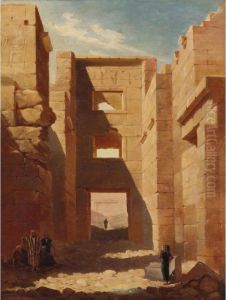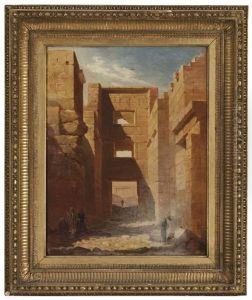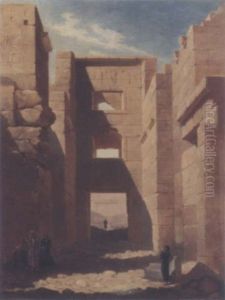John Dibblee Crace Paintings
John Dibblee Crace was a British interior decorator and designer, known for his significant contribution to the aesthetic movement and his role in the decoration of numerous high-profile buildings in the United Kingdom during the late 19th and early 20th centuries.
Born on September 26, 1838, into a family of decorators, Crace was the fourth generation to enter the family business, which was established by his great-grandfather Edward Crace. The Crace family had a longstanding tradition in the field, with a reputation for high-quality workmanship and design, which provided the young John Dibblee Crace with a solid foundation in the world of interior design.
John Dibblee Crace initially worked under his father, John Gregory Crace, who had established a partnership with the well-known architect Augustus Pugin. This collaboration was most notably seen in their work for the Houses of Parliament in London. Following his father's retirement in 1869, John Dibblee Crace took over the family business and continued to enhance its prestige.
During his career, Crace championed a more restrained and refined approach to interior decoration compared to the often over-elaborate designs of the Victorian era. He was not only involved in the design aspects but also oversaw the practical execution of his schemes, ensuring a high standard of quality. Crace's projects ranged from domestic interiors to public buildings, and he was known for his versatility in working with different styles, from historical revivals to more innovative designs.
Some of John Dibblee Crace's notable works include the decoration of the Victoria and Albert Museum, the British Museum, and several rooms at the National Gallery in London. He also worked on the redecoration of Woburn Abbey and the interior of the Royal Pavilion in Brighton. His work extended beyond public commissions to include private residences, where he brought his refined aesthetic sensibilities to the homes of the Victorian elite.
Crace was also an active member of the South Kensington Museum (now the Victoria and Albert Museum), where he contributed to the development of design education in Britain. His expertise in historical styles was highly regarded, and he was involved in the formation of the museum's national collection of wallpapers.
John Dibblee Crace passed away on April 13, 1919. His legacy lives on through the rich interiors he created and his influence on the field of British interior design. The Crace family papers, including drawings and photographs of his work, are an important resource for the study of Victorian and Edwardian design and are held in various collections, including the archives of the Victoria and Albert Museum.


